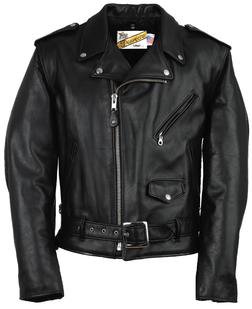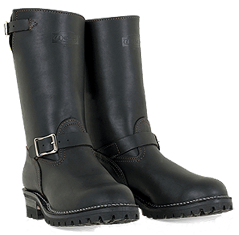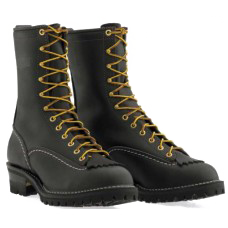Leather Education & Community Links:
Leather Care:

Leather deserves proper care. It is best to hang up leather when you aren’t wearing it. After wearing leather garments and accessories let them hang out where air will circulate around them for a day to ensure they aren’t damp.
To take care or your leathers periodically clean and condition your leather, the frequency you wear them and the climate you live in affect how often this in needed. Leather that is worn frequently may need to be lightly cleaned and conditioned every 3 to 6 months, leather garments worn less often may need to be lightly cleaned and conditioned at least once each year. Dirt and stains should not be allowed to remain on leather as they can damage your leather garments. Leather garments should feel supple, you should not wear leather that feels dry or brittle until it has been cleaned and conditioned, cracks in leather cannot be removed. Leather garment manufactures are often the best source of information on caring for your specific leather items, retail shops are also a great source of information, experienced boot blacks can be a good source of information too.
Cleaning: To clean smooth leather, start by brushing or wiping off any loose dirt or dust with a dry clean cloth. Dirt and light stains can be cleaned for most smooth finished leather gear with a clean cloth dampened with warm water. For deeper cleaning a pH-balanced leather cleaner, such as Lexol Leather Cleaner, can be used. Apply a small amount leather cleaner onto a clean cloth or sponge, not directly onto the leather, gently rub it into the leather in a circular fashion. Allow it to sit for a few minutes then wipe with a clean dry cloth. A solution of white distilled vinegar and water can be dabbed on to remove soaked in stains, follow the vinegar and water solution by wiping with a warm water. Avoid using soap or saddle soap for garment leather as they are alkaline (pH 9-10) which will breakdown the leather’s fiber bundles over time and cause hardening. For a more thorough cleaning, it is recommended to take your leather to a professional cleaner that specialize in cleaning leather garments. Suede leather should only be cleaned by a professional leather cleaner.
Conditioning: After cleaning allow the leather to dry naturally at room temperature. Once the leather is dry apply a leather conditioner. Use a conditioner designed specifically for the type of leather you are cleaning. Leather conditioners are designed to replenish the oils for finished leather products and help prevent leather from drying or cracking. Apply onto a clean cloth, not directly onto the leather, gently rub it into the leather in a circular fashion, following the instructions provided with the conditioner. Avoid over conditioning, use only enough conditioner to cover the leather and be able to rub it all in within a reasonable time. Allow the conditioner time to soak in then buff off any excess with a clean dry cloth. If you wear your leather in rainy weather, conditioners that contain waxes, such as Carnauba wax, will help make your leather more water resistant.
Commonly recommended products for leather garments and accessories include Lexol Leather Cleaner, Lexol Leather Conditioner, Bicmore BICK4 Leather Conditioner, Cadillac Boot & Shoe Leather Lotion, Leather Honey Leather Cleaner, Leather Honey Leather Conditioner, Otter Wax Leather Salve and Leather Oil, Fiebing’s Carnauba Cream, Kiwi Leather Conditioner or Lotion, and Pecard Leather Dressing.
Leather Boot Care:

Leather boots require consistent attention to protect and lengthen the life of the boots, most boot manufactures provide recommendations on boot care. Bootblacks can be found at leather bars in major cities and for a small fee will care for your boots, depending on what is needed. Leather boot care typically involves 3 steps:
Cleaning – involves dirt and dust removal, it is best to avoid leaving mud on boots for any length of time, it draws out all the natural oils and fat, robbing the leather of strength. A nylon brush may be used to help remove any dirt and mud. Follow up using a damp cloth with warm water to remove any remaining dirt or mud.
- If deeper cleaning is required a pH-balanced leather cleaner such as Lexol Leather Cleaner is recommended. Apply a small amount leather cleaner onto a clean cloth or sponge, not directly onto the leather, gently rub it into the leather in a circular fashion. Allow it to sit for a few minutes then wipe with a clean dry cloth to remove any remaining residue and allow the boots to dry at room temperature after cleaning, do not use any direct heat. Traditionally people used unscented bar soap or saddle soap for deep cleaning boots when needed, however, this is no longer recommended as soaps are alkaline (high pH) which can damage leather with repeated use by removing leather’s tanning agents, leading to hardening and cracking as the leather is de-tanned.
- If needed, the inside of your boots can be cleaned with a combination of warm water and baking soda, do not rinse, wipe with a clean dry cloth and allow to dry at room temperature.
Conditioning – helps preserve the finish and life of your footwear by replenish the oils and helping prevent leather from drying or cracking. A conditioner should always be applied after a leather cleaner or soap product has been used. The type of conditioner to use depends on the type of leather the boots are made of:
- For smooth-finished “polished” leather boots apply a boot cream or boot lotion with a clean, soft cloth, let dry for a few minutes, then shine the boot by brushing or buffing with a soft horse-hair brush or cotton shine cloth. Commonly recommended products include Cadillac Boot & Shoe Leather Lotion (which cleans, conditions and protects), Lincoln Shoe Polish (for polishing boots) and the conditioners and creams listed above for general leather care.
- For oil-tan leather boots apply a boot oil or leather conditioner. Commonly recommended products include Huberd’s Shoe Oil, Huberd’s Shoe Grease, and Wesco Bee Oil.
- Boot manufactures may list preferred products on their website, local boot retailers and experienced bootblacks can also provide information for specific kinds of boots.

Protecting – if you wear your boots in wet conditions it is helpful to finish with a leather protector which prevents water, salt and other elements from penetrating the surface where they can be wiped away instead of soaking into the leather’s pores and fibers, boot manufactures may list preferred products on their website.
Cedar boot trees are specifically designed to fill the heel and lower leg portion of your boots when not in use to maintain the correct shape of your boot and absorb moisture from daily wear.
Additional Information:
- Exploring the Gay Leather Community
- Gay Leather Community Events and Organizations
- Wearing Leather
- Leather Care
- Leather Shops
- Handkerchief Codes
- Exploring Kink
- Mr. CMEN Leather
Note: Leather is acidic, with a pH typically between 4.5 and 5.0. Saddle soaps are typically highly alkaline, with a pH of 9–10. When you bring an acidic and an alkaline substance into contact with one another, a chemical reaction occurs which leads to breakdown of the leather’s fiber bundles and hardening.
Trust, Honor and Respect
Information on this page is from the Leather 101 workshop at the West Coast Gathering, September 2016 – 2019, presented by Rick B. Mr CMEN Leather 2015.
Information on this page is provided for educational purposes and does not imply endorsement by CMEN. Please note that CMEN does not control the content of linked web sites, the organizations who own these web sites accept sole responsibility for their content.
Exploring the Leather Community – Leather Events and Organizations – Wearing Leather – Leather Care – Leather Shops – Hanky Code – Exploring Kink

